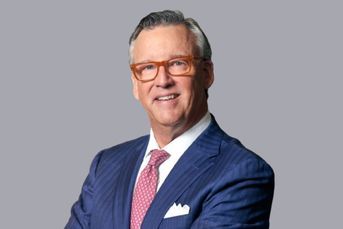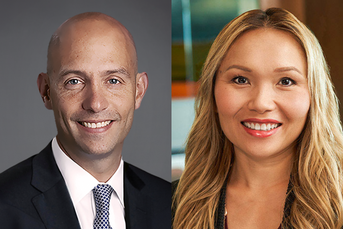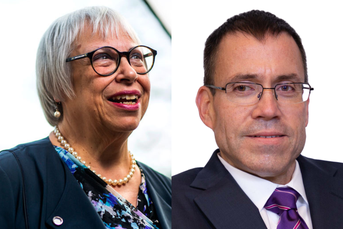The new essential

By addressing clients’ health and aging, advisers can prove their value as rising health care costs threaten the security of retirement accounts
The costs of health care and long-term care are rising as people live longer, and many are ill-prepared to cover the exorbitant bills they might encounter. Today, people just heading into retirement can potentially pay hundreds of thousands of dollars out of pocket for health care.
[More: Financial advisers shouldn’t have to stress over health insurance]
Among people near retirement, worries over these costs are second only to the fear of running out of money, according to a 2019 report from Empower Retirement. For many, that concern is well-founded; out-of-pocket medical costs average $285,000 for a 65-year-old couple retiring in 2019, according to Fidelity Investments. That amount would wipe out savings accounts for many older workers — the average retirement savings among people ages 56 to 61 was less than $250,000 at the end of 2016, according to data from the Survey of Consumer Finances analyzed by the Economic Policy Institute.
It’s a daunting issue – one they want their financial advisers to address.
“Some advisers may be reluctant to broach the subjects of health, aging and dementia,” said Chris Heye, who co-founded Whealthcare Planning, a firm that provides health care planning services to individual clients and advisers. “But they can be assured that virtually every client they have over age 50, especially those over 60, are desperate to talk about this.”
Advisers do not necessarily need to be blunt, Mr. Heye said. They can ask clients open-ended questions about how their parents or children are doing, for example. That can segue to conversations about long-term care and health planning.
[More: Having the tough talk about retirement health care costs]
Today, people seem to have fewer confidants for those discussions, which used to take place with family doctors or religious leaders, Mr. Heye said.
“A lot of people don’t have that — and a financial adviser has a great opportunity to become that person,” he said.
HEALTH CARE PLANNING ALONGSIDE 401(k)s
Demand exists within employer-sponsored retirement plans, if recent mergers and acquisitions are any indication. In early February, insurance broker OneDigital bought a $45 billion RIA, Resources Investment Advisors, establishing a full-service benefits business for small- and medium-size employers. That followed large acquisitions by benefits aggregator Hub International, which snapped up Sheridan Road Financial and Global Retirement Partners.
Adding health care planning can help advisers prove their value — and that can be useful in down markets, when investors might question why they are paying for investing services, Mr. Heye said. Adding health care planning can also help bring in new assets and clients, he said.
Fidelity’s most recent estimate ($285,000, cited above) for the cost of health care in retirement is up from $280,000 for those retiring in 2018. Since 2017, estimated costs only increased by 3.6% over two years, versus a rise of 12.2% seen between 2015 and 2017, according to Fidelity.
By historical standards, those increases are relatively low, said Dr. Carolyn McClanahan, director of financial planning at Life Planning Partners.
“In general since the ’70s it’s been 6% to 7% [per year],” Ms. McClanahan said.
She helps clients plan to save enough for retirement in general, with health care costs being “another budget line item,” rather than a figure for total savings dedicated to health care spending.
[More: Tech to help advisers plan for more years of healthcare costs in retirement]
“Nobody lump-sums their health care, because you don’t know how long you’re going to live, and you don’t know what your health care costs are going to be,” she said. “Our method of planning around health care is more about shaping behaviors to reduce [costs] than they are on trying to predict future health care costs.”
Indeed, trying to accurately predict health care costs decades ahead is virtually impossible. And one area of concern is the future of the Medicare system. President Donald J. Trump singled out Medicare for the chopping block in his proposed fiscal year 2020 budget, seeking to cleave more
than $478 billion in federal funding from the system between 2021 and 2030.
Although that change almost certainly will not get through Congress, it shows that there is at least some political will to cut back on the system.
But advisers shouldn’t consider any recommendations based on how Medicare will look in the future, Dr. McClanahan said. While other industrialized countries have overhead costs for health care ranging between 5% and 10%, that figure is at least 25% in the U.S., she said.
If the rate of inflation in health care goes unchanged, health care costs will account for half of gross domestic product in the U.S. in 25 to 30 years, she said.
“That’s not politically possible,” she said. “We’re going to have to do something to fix health care down the road.”
Telling clients to expect 6% inflation for health care would “give them a heart attack,” she said.
“Trying to get people to plan for a system that is broken and dysfunctional — you can’t do it,” she said. “You just get that person saving as much as possible for retirement in general.”
That also includes helping people be more proactive in managing their current health care costs. Advisers can support clients by encouraging them to adopt healthier lifestyles and learn “to be a good patient” by seeking lower-cost alternatives to treatment and medicines where possible, she said.
“Our health care system tends to do too much to people,” she said. “We over-test more than any other country.”
THE HSA BOOM
One area growing quickly within employer-sponsored benefits is health savings accounts, or HSAs. Total assets in HSAs are projected to hit $75.5 billion by the end of 2020, which would more than double the $37 billion reported in those accounts in 2016, according to HSA investment firm Devenir.
[More: Why healthy clients need to save more for retirement]
Fidelity Investments saw its HSA business hit $5.6 billion in assets as of the end of 2019, up 57% from a year prior, said Begonya Klumb, who leads the company’s HSA business. There are about 1.2 million funded accounts the firm oversees, Ms. Klumb said.
The company is also seeking to expand its client base. In January, it began offering its HSAs through financial intermediaries, rather than only directly to clients in its recordkeeping business, Ms. Klumb said.
Those accounts can be essential, as about 60% of people underestimate potential health care costs in retirement by about half, based on the average $285,000 figure, she said.
HSAs are available for people who have high-deductible health plan coverage, and they can be used like checking accounts or as investment accounts. Unlike flex spending accounts, the assets roll over annually and can be saved for retirement.
The annual contribution limits for HSAs in 2020 are $3,550 for individual coverage or $7,100 for family coverage, up from last year’s limits of $3,500 and $7,000.
The first accounts launched in 2004, following the 2003 Medicare Prescription Drug, Improvement and Modernization Act.
[More: Advisers plunge into providing health care]
Initially, HSAs were most common in small businesses with high deductible plans, though large employers have more recently added them, said Eric Remjeske, Devenir’s president and co-founder. About 75% of larger employers now provide them, he said.
“Early on, there was a perception that these [accounts] were for the healthy and wealthy,” Mr. Remjeske said.
The percentage of employees that opt for those accounts “depends on how the plan design is put together and what type of industry it is,” he said. “You’re going to get more adoption of this type of plan in office environments more than in retail and restaurant [businesses].” Currently, HSA ownership follows a bell curve of ages and is spread among different income brackets, he said.
A common selling point is that HSAs have a so-called “triple-tax advantage,” meaning that contributions are made pretax, interest and investment returns are not taxed, and payments for qualifying medical expenses are tax-free.
Advisers can be helpful by getting an understanding of how different account holders use their HSAs and by making recommendations to them to maximize the benefits, said Jon Robb, senior vice president of research and technology at Devenir.
“There are a lot of HSA accountholders out there who are using these as a pass-through vehicle for spending,” Mr. Robb said. Others intend to use it as a secondary retirement-savings account, he said.
“One of the common misconceptions is that people don’t realize they can pay for [medical expenses] out of pocket and get reimbursed later on,” he said.
[More: Health care is part of wealth care]
Given clients concerns about health care expenses in retirement — and the resources available for planning and saving — advisers only stand to benefit by responding to the demand.
“The data overwhelmingly suggests that this is what the clients want to talk about,” Mr. Heye said. “Advisers who are able to have these discussions successfully are going to do much better.”
Learn more about reprints and licensing for this article.








